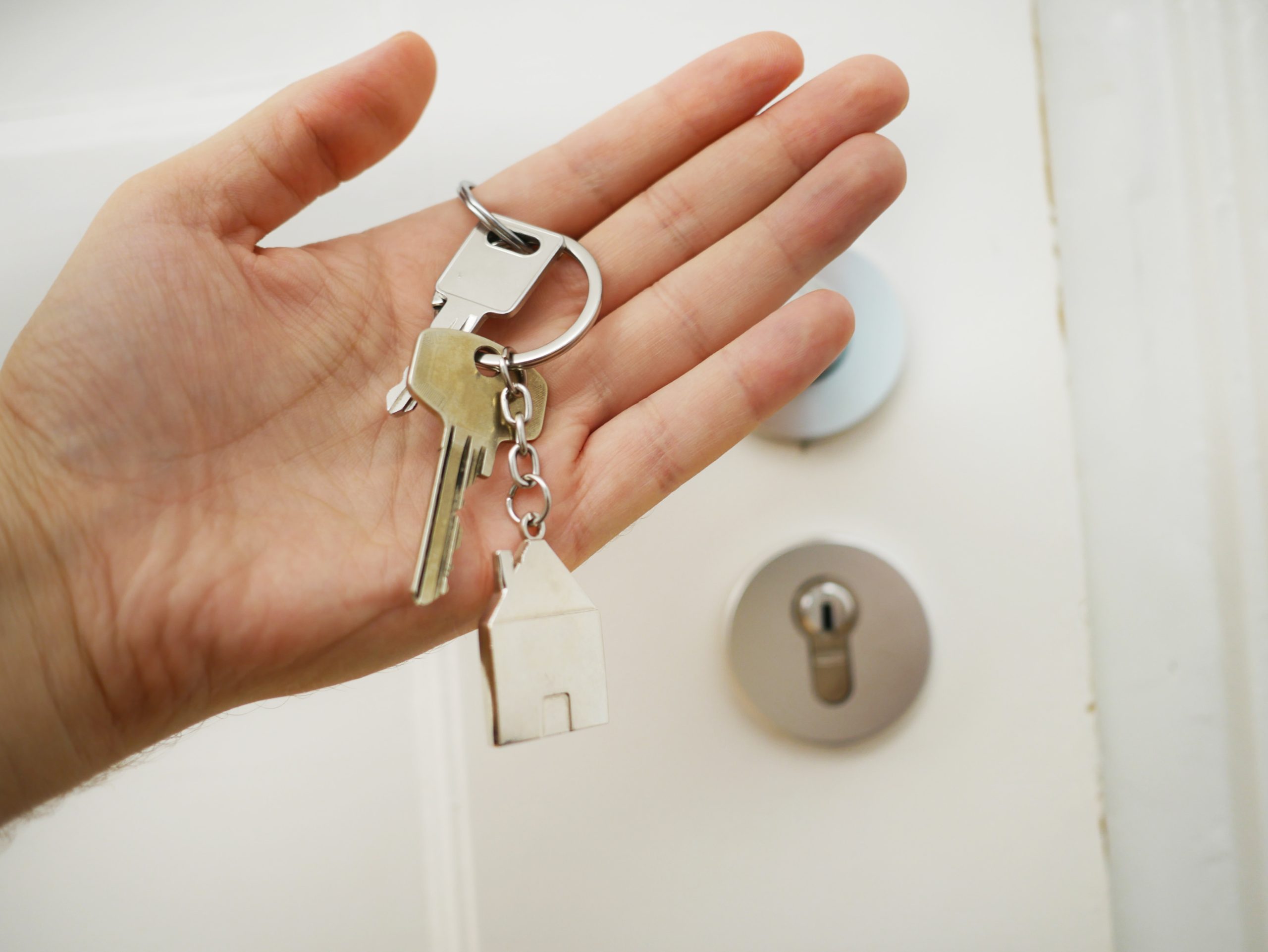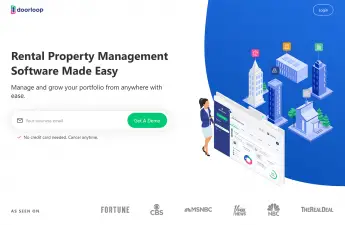In this video, Chris and Eli address the entire move-in process. From signing the lease to handing over the keys, they walk you through everything that you should do.
Topics in this video include:
- Signing the lease [0:31]
- Payments [2:49]
- Overview walkthrough with the tenant [3:44]
- Property condition report [5:01]
- Handing over the keys [7:59]
Transcript
Eli Secor: Hello! This is Chris and Eli—I’m Eli, that’s Chris—from Landlord Gurus. And we have done episodes on each of the steps of filling a vacancy. At this point, we’re going to cover the point at which you actually hand over the unit to a new tenant. You’ve signed a lease or you’ve at least agreed upon the lease terms and you’re at that point where they’re gonna take occupancy.
Signing the Lease
So, first off, you have to deal with actually signing the lease. So Chris, do you do physical signing or electronic? And at what point do you do that?
Chris Lee: No, I do electronic, all electronic at this point. I will usually do it once we agreed upon terms, and sometimes that’s several days in advance of move-in or, you know, sometimes the day of. But yeah, I do all electronic. It’s just quicker and easier. And you don’t have to print stuff out.
ES: Yeah, I do the same. Usually a few days ahead of time. I used to go and walk through the lease page by page with tenants. But we write about EZLandlordForms and Avail and TurboTenant, and they all provide 50 state-specific lease documentation that can be filled out straight from the application and then sent off for signing.
![]() Also Read: 6 Reasons to Create State-Specific Lease Agreement Forms Using Property Management Software
Also Read: 6 Reasons to Create State-Specific Lease Agreement Forms Using Property Management Software
For the documents that aren’t included on those platforms, and I’m using Avail, I will create them offline and then upload them for signing via DocuSign. So you can do it that way as well. So you use a similar product to DocuSign, right?
CL: I use a similar product, yes. And you upload your forms and determine who’s signing what part, and then it automatically sends that off and it creates a secure, reliable signing process that is enforceable and legally binding.
ES: Legally binding, yeah. And if you get to the point where you are going to hand over the unit and you haven’t yet signed a lease and collected a deposit, then make sure that once you’ve agreed on those terms, and basically everybody has agreed that this is gonna be the new tenant and that they’re committing to all your terms, use a form that documents the intention to rent and collects a deposit that ensures that they’re gonna follow through on that and not leave you high and dry on the day of.
CL: Exactly. That’s a great point, yeah. If you agree to have someone rent, move in and you don’t sign it right off the bat, then yeah. To ensure that they are going to, so you can take the unit off your listing and not have to keep showing.
ES: Or have to start all over again if somebody leaves you high and dry. Leaving you unpaid for rent for potentially another month. Okay, so you have either pre-signed or are signing on the day of, the lease documents that make everything all official.
Payments
Equally important is to collect any money that you haven’t already collected. Again, using property management software. I use Avail. There’s PayRent. All these companies we’re talking about, are leaders in the field and they’re also partners of ours. So, you know, full disclosure on that. I initiate all that beforehand and we’ll deal with collecting money and particularly collecting money electronically in another episode.
But, if you get your check or your money order, we recommend against cash. So you’re made whole, you know, before they’re getting to take occupancy. Are you doing all your payments electronically, Chris?
CL: No, and especially for those upfront ones and I think particularly if there’s a short period of time between when we’ve agreed upon the terms and conditions and when they actually move in, and there may not be time to set up the online payment process yet. So in a lot of circumstances, there’s still that first, you know, that initial payment when we meet them and hand over the keys for the deposit and first month rent, is often in the form of a check or in the form of a money order. Which is more and more the case these days as a lot of our younger tenants don’t seem to have checking accounts.
ES: And it’s more secure. That means that money is there, they can’t bounce.
CL: Yeah, exactly.
Overview Walkthrough With the Tenant
ES: Right, right. So you’ve got signed documents and you have money. So the next step is to do kind of an overview walkthrough with the new tenant. Getting them familiar with the property, the building, their particular unit, re-enforcing important things, like use the fans when you’re cooking or showering, because that means that you’re not getting mildew in the unit. That’s avoidable.
CL: Exactly. Anything like that, that they’re not accustomed to or haven’t dealt with before. You know, don’t put eggshells down the garbage disposal, things like that. Or, if there’s just anything unusual, you know, this front door maybe is a little sticky, so if you wanna lock it, make sure you push it in a little bit more. I don’t know. It could be anything as simple as that, to telling them where they need to park their bikes or where their parking spot is or where the garbage goes and how that gets in, things like that.
ES: Yeah. How the laundry room operates and kind of what the protocol is.
CL: Exactly. And I think that you end up with a lot of things you take for granted, and you think, well, everybody should know that, but in a lot of cases they don’t. It might be their first time living alone or their first time in an apartment like this. So, you know, it’s new to a lot of people and so, it does require just going over sometimes, just the basics.
ES: Yeah. And it avoids a lot of hassles down the road where a problem has already happened. And then you’ve gotta go backward and say, “Oh, well no, you have to do it this way.”
Property Condition Report
Okay. So you’ve gone through the building, through the property. The next step is the property condition report. I think most locations are required now to go along with the lease. And that is a document that formalizes the agreement between the landlord and the tenant of the condition of the unit that they’re taking over.
CL: Even if it’s not required, I would still recommend you do it.
ES: For sure.
CL: Yeah. Document it so that when they move out, everybody knows who’s responsible for the damages, if there have been any.
ES: Right. And that’s precisely what you put on that document up front is, “Oh, okay. Well, there’s a dent in the wall here.” Or, a good example for me, is when I’m leasing a unit that doesn’t yet need a full paint job, but there are a couple of things that are left over from the last tenant that don’t warrant a full paint job. You know, it’s an anchor that goes into the wall or a hole that’s been touched up, but doesn’t look perfect. The tenant shouldn’t have to pay for that down the road.
It’s good for everybody and they know they’re not gonna have to pay for an existing problem, and you know if they create a problem, it’s documented that it wasn’t there when they moved in. So it’s an agreement on what the condition is.
CL: Exactly.
ES: And I think photos and video are a great way to go about it. I think the best practice is—Chris and I were just talking about this—is to actually take the form yourself ahead of time and fill out everything that you see that’s an issue. Take photos and or video ahead of time, possibly send that to the tenant ahead of time, electronically. So that when you meet them there, they can go through and look at the section that addresses the bedroom and say, “Okay, yeah. I see that they’ve marked the nail holes here. Or, the blind, it’s a little sticky.” And that it’s not a whole process of them having to examine everything while you’re standing there twiddling your thumbs.
CL: And I think the documentation with photos and videos is a great point. You can, even if you are using property management software, you’ve probably got some file storage capabilities. So you can just upload all of that there. And it’s there for the tenant to see and it’s there at the end of the terms of their lease. Then you can refer back to those photos and videos as well. And it’s in the same storage location.
ES: Yeah. And easy to get to.
CL: And a lot of them have property condition report templates that you can use. There are others like EZLandlordForms, where you can, we’ll put the links to all this stuff in the description, but you can go there and download their sample property condition report as well.
![]() Also Read: EZ Landlord Forms: Free Rental Application PDF and Lease Templates
Also Read: EZ Landlord Forms: Free Rental Application PDF and Lease Templates
It’ll usually have, you know, the name of the tenant, the address of the property, and then sections like Eli was talking about, the bedroom or the living room, bathroom, kitchen. And different features within each of the rooms that you can then examine and give a rating: good, fair, or things like that.
ES: And any notes.
CL: Yes.
ES: Okay. Once you’re done with that, then both parties sign it. It’s official, it’s part of the lease, like you said, Chris, it’s a great idea to have a spot where all that gets uploaded. It’s easy for everybody to find and refer to. You can hold people responsible when you can show that they have access to it.
Handing Over the Keys
So, you’re pretty well done with the process, and at that point, it’s just time to hand over the keys, or in my case, codes. I put punch pad door locks, usually the deadbolts. And, I’ll ask them if they have a code that they like, something they use for other things and that they can remember. Then I’ll take all the previous codes out of that lock so that nobody prior can then access the unit and I’ll put their new code in. And that’s the way I do it. Sometimes I do the programming ahead of time. If I’m there, and especially if I’m already there ahead of time filling out the condition report, that’s all done.
And you can get in and out. And have everybody spend a minimal amount of time, you know, doing the process. But you have keys.
CL: I still use keys for most of the units. I think there’s one with the electronic code, but with the keys, just hand over the keys. Sometimes there are two keys and they can pass on a set to a friend or someone who can hang on to an extra, you know, a spare key in case they get locked out, which happened to me recently. Somebody got locked out and didn’t have a spare. But, I will often give them the keys. If there’s not already a spare, I will tell them they ought to go make a spare and give it to someone they trust. And inform them if, you know, they do get locked out and I have to come let them in, there might be a fee. There will definitely be a fee if they call a locksmith.
ES: Yeah. That goes in the lease and it’s something to pay attention to. I make no promises about being as accessible at any point.
CL: That’s fair. And especially if you have property that’s not located in the same place where you’re living. For sure.
ES: Yeah. Alright, I think we’re done with this portion of the process. So we’ll sign off here and we’ll come back again and address electronic rent and collection. Thanks for watching. Please like, subscribe, share with others, and come back for the next one. This is Chris and Eli with Landlord Gurus and thanks for watching.
CL: Thanks.
ES: Thanks. Bye-bye.
Disclosure: Some of the links in this post are affiliate links and Landlord Gurus may earn a commission. Our mission remains to provide valuable resources and information that helps landlords manage their rental properties efficiently and profitably. We link to these companies and their products because of their quality, not because of the commission.




